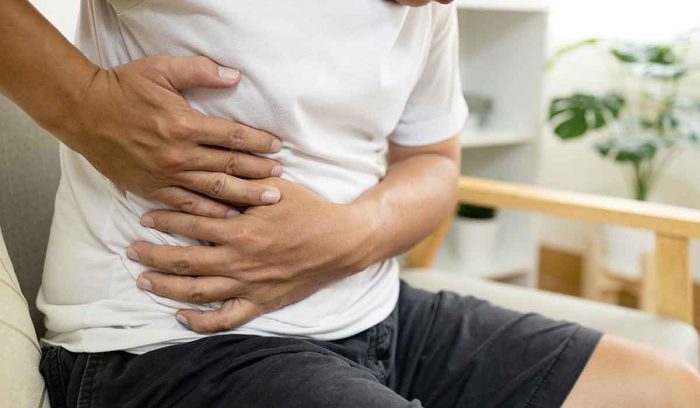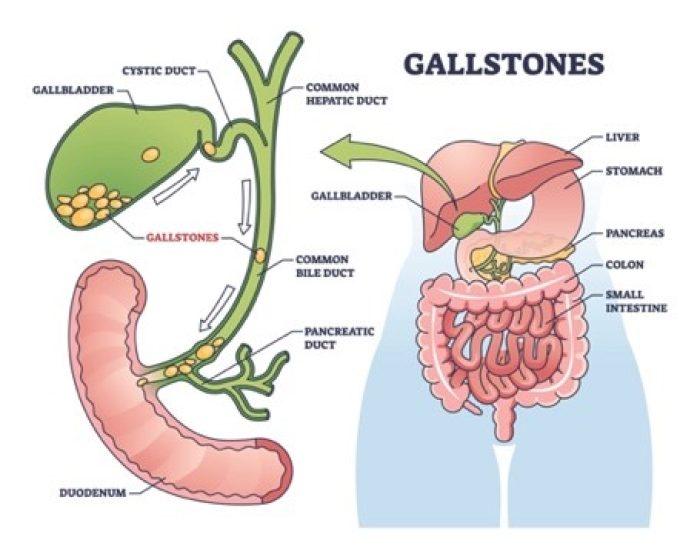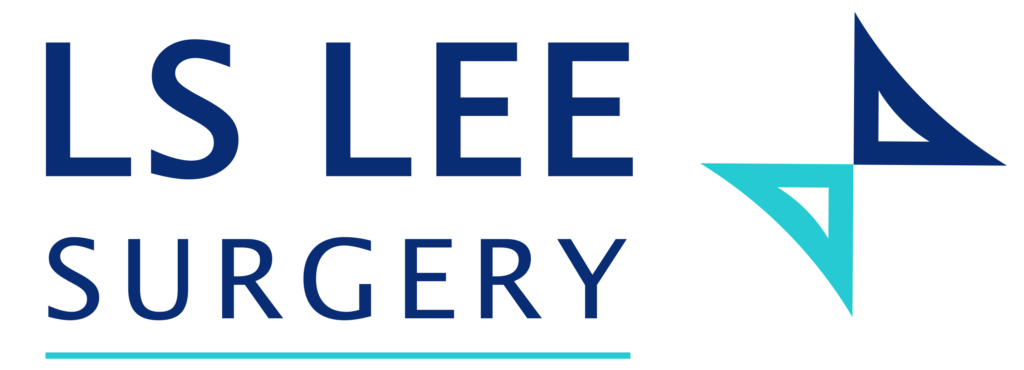Gallstones Symptoms
Symptoms of Gallstones Diseases
Gallstones is one of the silent disease which does not show any sign of pain/ discomfort. However, biliary colic (pain) occurs when the stones block the biliary duct.

Common symptoms :
- Upper abdominal pain
- Abdominal pain that travels to the right shoulder
- Nausea & vomiting
- Abdominal bloating
Symptoms in severe cases, apart from constant pain :
- Fever and chills
- Increased heart rate
- Jaundice
- Dark-coloured urine and light-coloured poop
Possible Complications of Gallstones
Symptomatic gallstones refer to the presence of gallstones in the gallbladder that cause noticeable symptoms or complications.
Not everyone with gallstones experiences symptoms, and gallstones may be discovered incidentally during imaging tests for unrelated issues. However, when gallstones lead to problems or discomfort, they are considered symptomatic.
Common symptoms and complications associated with symptomatic gallstones include:
Biliary Colic – This is a type of pain that occurs when a gallstone temporarily blocks the normal flow of bile from the gallbladder. The pain is typically felt in the upper abdomen or right upper quadrant and can be severe. Biliary colic usually resolves when the gallstone moves.
Cholecystitis (Gallbladder Inflammation) – An infection or obstruction in your gallbladder or the bile duct connected to it can cause inflammation, swelling and pain inside it. Symptoms include severe pian and fever. Gallstones are usually the cause of both chronic and acute cholecystitis.
Cholangitis (Bile Duct Inflammation) – Cholangitis occurs when a bile duct becomes blocked by a gallstone and the bile becomes infected. This causes pain, fever, jaundice and rigors (shaking).
Pancreatitis (Pancreas Inflammation) – In some cases, gallstones can migrate and block the pancreatic duct, leading to inflammation of the pancreas (pancreatitis). This condition is characterized by severe abdominal pain, nausea, vomiting, and can be a medical emergency.

If your gallstones cause symptoms or complications, medical evaluation and treatment may be necessary. Treatment options with surgical vs non-surgical ways have to be discussed with your doctor depending on your diagnosis.
Removal of the gallbladder (cholecystectomy) is the standard treatment for patient with symptomatic gallstones.
Diagnosing Gallbladder Problems
Diagnosing gallbladder issues typically involves a combination of medical history review, physical examination, and diagnostic tests. Common diagnostic procedures include:

Ultrasound Imaging – Ultrasound is often the initial imaging test used to visualise the gallbladder and detect presence of gallstones with high accuracy.
CT Scan/ MRI – In some cases, CT scan or MRI may be ordered to provide more detailed images of the abdomen to identify complications associated with gallstones, such as inflammation of the pancreas or infection of the bile ducts.
Blood tests – Blood work may reveal elevated levels of liver enzymes or bilirubin, indicating gallbladder inflammation or obstruction.
Endoscopic procedures – Endoscopic ultrasound (EUS) or endoscopic retrograde cholangiopancreatography (ERCP) may be performed to evaluate the bile ducts and obtain tissue samples for further analysis.
Consult our Gallbladder Specialist, Dr Lee Lip Seng for a detailed diagnosis & treatment plan. Dr Lee is professionally skilled in minimally invasive surgery and experienced in managing gallbladder diseases.
At LS LEE Surgery, we ensure continuity of care throughout every phase of our patients’ surgical journey, from pre-operative care to post-operative care.





